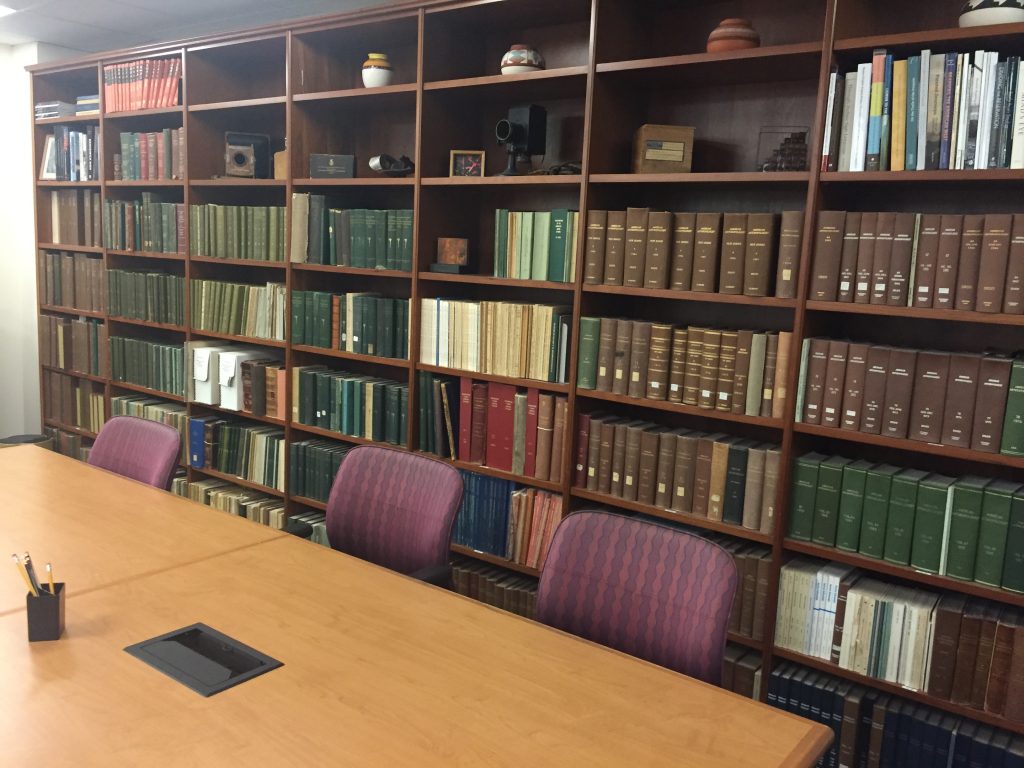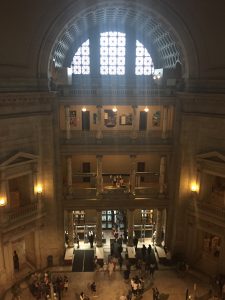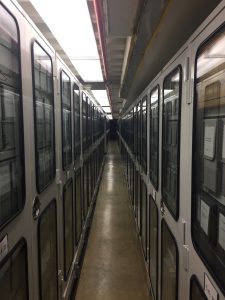Name: Peyton Moriarty
Class Year: 2021
Major: History
Hometown: Ashburn, Va.
Internship Organization: National Anthropological Archives (NAA), National Museum of Natural History (NMNH), Smithsonian Institution
Job Title: Archival Curatorship and Outreach Intern
Location: Washington, D.C.

Reading Room in the National Anthropological Archives.
What’s happening at your internship?
This summer I’m assisting the NAA in making an exhibit that will appear on the ground floor of the National Museum of Natural History (NMNH). It’s a rather meta creation of the NAA about the history and practice of anthropology, titled Documenting Diversity: How Anthropologists Record Culture. Though the exhibit won’t open until next year, this summer there’s a wide variety of work involved: from drafting the exhibit script, to researching the collections, to writing blog posts that advertise the objects going on display. The exhibit will reflect the relationships the NAA and its predecessor have had with Indigenous communities, which span over a hundred years. Today, the NAA makes accessible its collections of items such as language records, photo catalogues, and song recordings. The NAA hosts researchers and Indigenous community members from around the world, who can view the collections in its Reading Room.
Why did you apply for this internship?
I declared my History major earlier this year, with the goal of becoming an archivist at the Smithsonian. The stories of history, and the objects and records those stories leave behind, are stunning to me. I enjoy understanding objects far older than myself and linking them to the present day. The opportunity was advertised to me in my BMC email the same day its applications were due — I shoved all my books aside and wrote up a cover letter.

National Museum of Natural History from the fourth floor.
Can you talk about the skills you are learning and why they are important to you?
I learned quickly the proper handling of archival documents, how to incorporate primary sources into articles, and how to write academic articles in more approachable, friendly tones. I found that I needed to adapt much of my writing process when it came to writing for public anthropology; though I’m accustomed to writing fiction or personal essays, anthropology requires a very different touch. As an aspiring archivist, all of this experience — particularly in searching for and retrieving archival materials from storage — has been invaluable.
What has been your favorite part of this internship?
The sheer variety of projects involved in an exhibit, and the depth of exploration involved in researching in an archive, are incredible. I was given opportunities to directly influence an exhibit that will appear in a national museum, and to research those items so thoroughly that I could present them to passersby when the NAA would cart the items into the museum. Simply existing as a NMNH intern literally opens doors into many of the museum’s collections: this summer, tours were offered of Paleobiology and Fossil Prep, Meteorites, the Insect Zoo, the Living Jellyfish Aqua Room, Marine Mammals and Whales, Rare Books, Birds, Mollusks, Physical Anthropology and Mummies, etc., and each were guided by a passionate expert working in the Smithsonian. Just last week I toured Gems & Minerals, where I held a strip of pure gold the size of an iPhone, felt the chilly conductivity of diamonds, and learned that many classic gem names — aquamarine and emerald, ruby and sapphire — are simply recolors of the same molecular structures, named exotically by gem cutters for better business. Just within the NAA’s own collections is a deluge of beautiful drawings, insightful photographs, and the dedicated work of great anthropologists, all snugly stored in rows upon rows of gray shelves.

Archive shelves.
But most of all, I am thankful for my wonderful experience with an archive that has at once enabled me to better understand the profession, to participate in important community-revitalizing work, and to help make something concrete. Come check out Documenting Diversity early next year!
